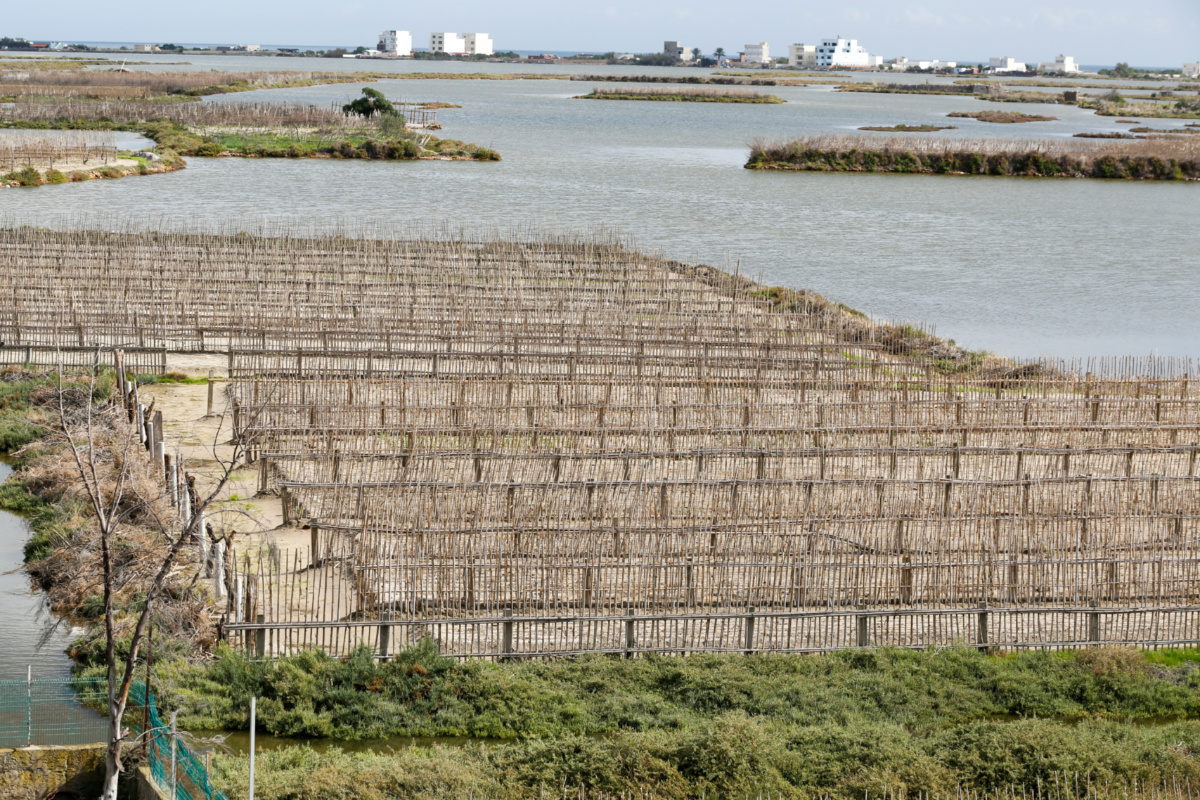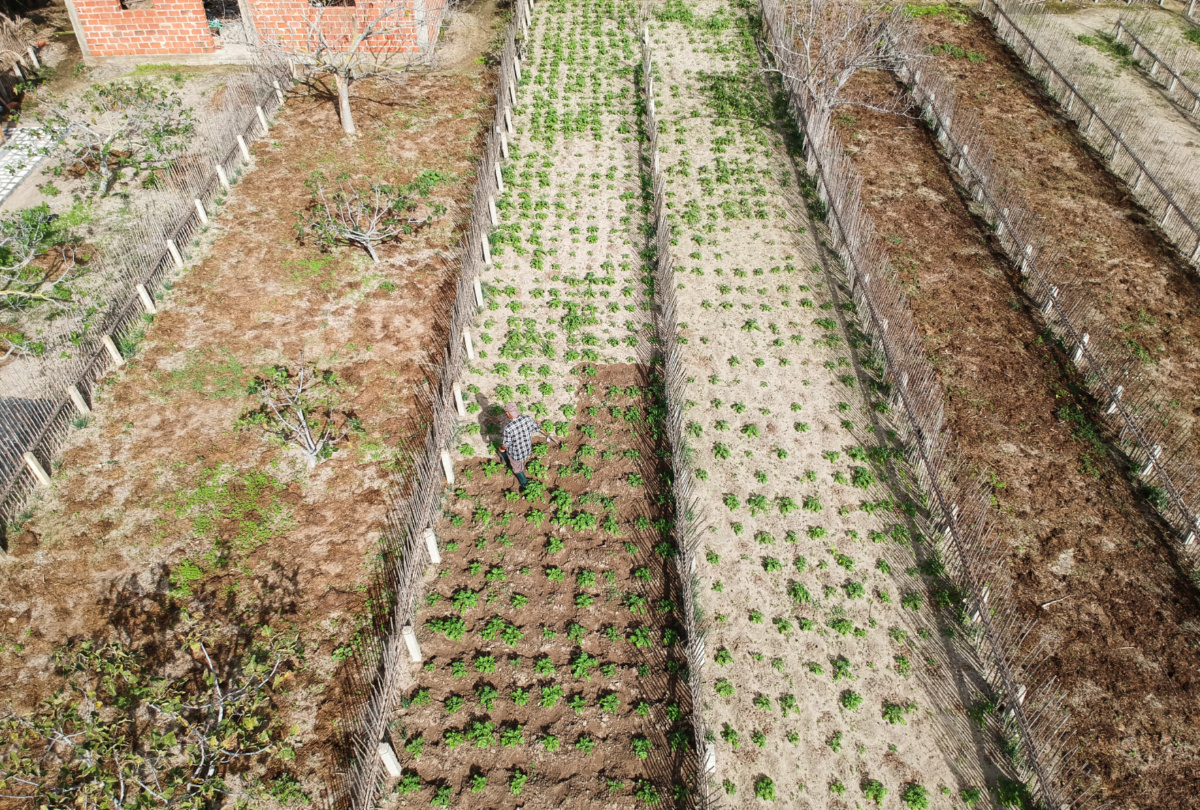
JIHED ABIDELLAOUI, of Reuters, reports on the challenges facing farmers on Tunisia’s Ghar El Melh wetlands…
Ghar El Melh, Tunisia
Reuters
Dotted among wetlands on Tunisia’s coast, a patchwork of tiny man-made islands stretches out towards the Mediterranean.
Ploughed in neat furrows and shored up by sandbanks inside a lagoon, they are home to a centuries-old system of agriculture that climate change threatens to wipe out.

A general view shows Ghar El Melh’s ‘Al-Qataya’, where farmers say a unique and traditional agricultural system is at risk of extinction due to climate change, in Ghar El Melh, Tunisia, on 2nd November. Picture taken with a drone. PICTURE: Reuters/Zoubeir Souissi
Ali Garsi has farmed a 0.8-hectare plot in the Ghar El Melh wetlands, which lie some 60 kilometres north of Tunis, for 20 years. Relying on a layer of freshwater that feeds his plants above a saltwater base, he grows mainly potatoes, onions and tomatoes.
But with sea levels and temperatures in the area rising and rainfall below average, his yields are dropping.
“There is a shortage in the quantities of rain, and this definitely negatively affected the quantity of our product in general,” the 61-year-old retired teacher told Reuters as he looked across the lagoon plots, collectively known as al-Qataya.
“Production is weaker, compared to years when the quantities of rain were respectable.”
Invented in the 17th century by North Africa’s Andalusian diaspora, the Ramli – meaning “sandy” in Arabic – agricultural system used by Garsi irrigates crops entrenched in a mix of sand and manure via their roots.
Its water-shortage resistant methods gained global renown last year when the United Nations’ Food and Agriculture Organization added Ghar El Melh to its list of agricultural heritage systems of global importance.
But the system’s reliance on a fragile balance of rain and sea tides means it faces unprecedented challenges.
“Al-Qataya has a traditional agricultural system that is now threatened with extinction due to several climate factors,” said environmental engineer Hamdi Hached.

Ali Garsi, a farmer, works on his land in Ghar El Melh’s ‘Al-Qataya’, where farmers say a unique and traditional agricultural system is at risk of extinction due to climate change, in Ghar El Melh, Tunisia, on 3rd November Picture taken with a drone. PICTURE: Reuters/Jihed Abidellaoui.
In August, a heat spike across northern Tunisia brought temperatures of 49 degrees Celsius, the highest since 1982, and the northern provinces, including Bizerte where Ghar El Melh is situated, witnessed their hottest summer ever.
Meanwhile, rainfall fell to below two thirds of its long-term average, a shortfall that climate modelling suggests could become permanent, Hached said.
Globally rising sea levels as temperatures increase pose a further threat to Ghar El Melh.
“The sea water level in the Mediterranean Sea will rise and…seep towards the areas surrounding Al-Qataya, which can…salinise the soil,” he said. “This could end this unique system.”






